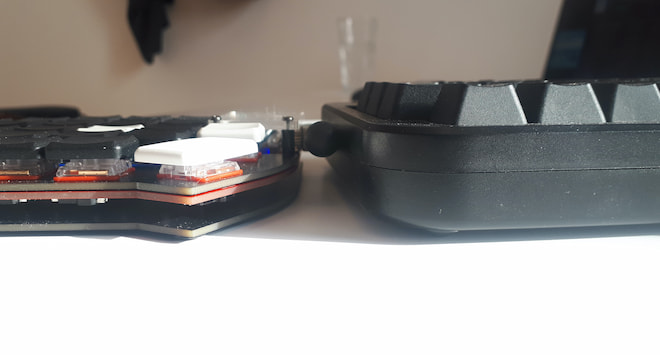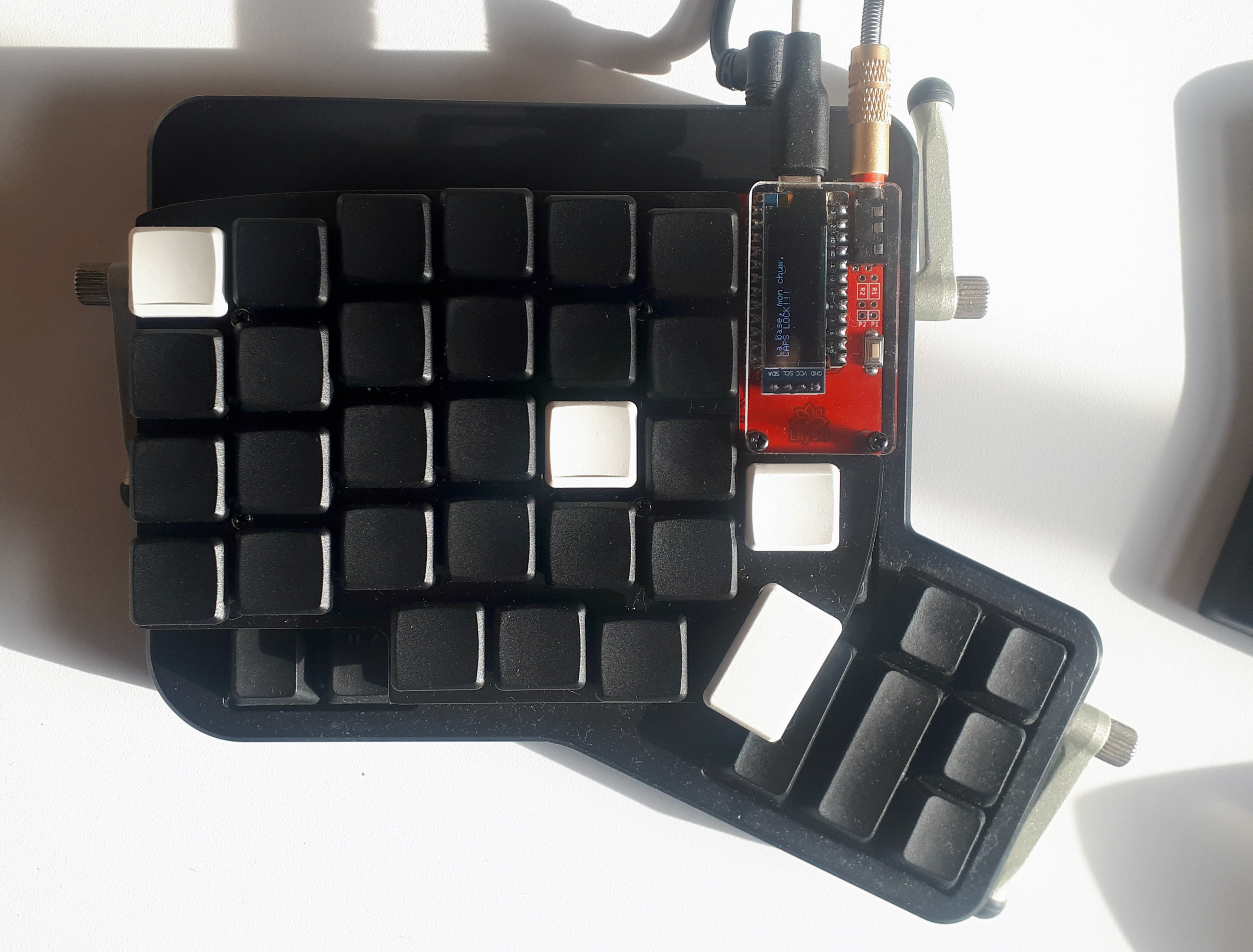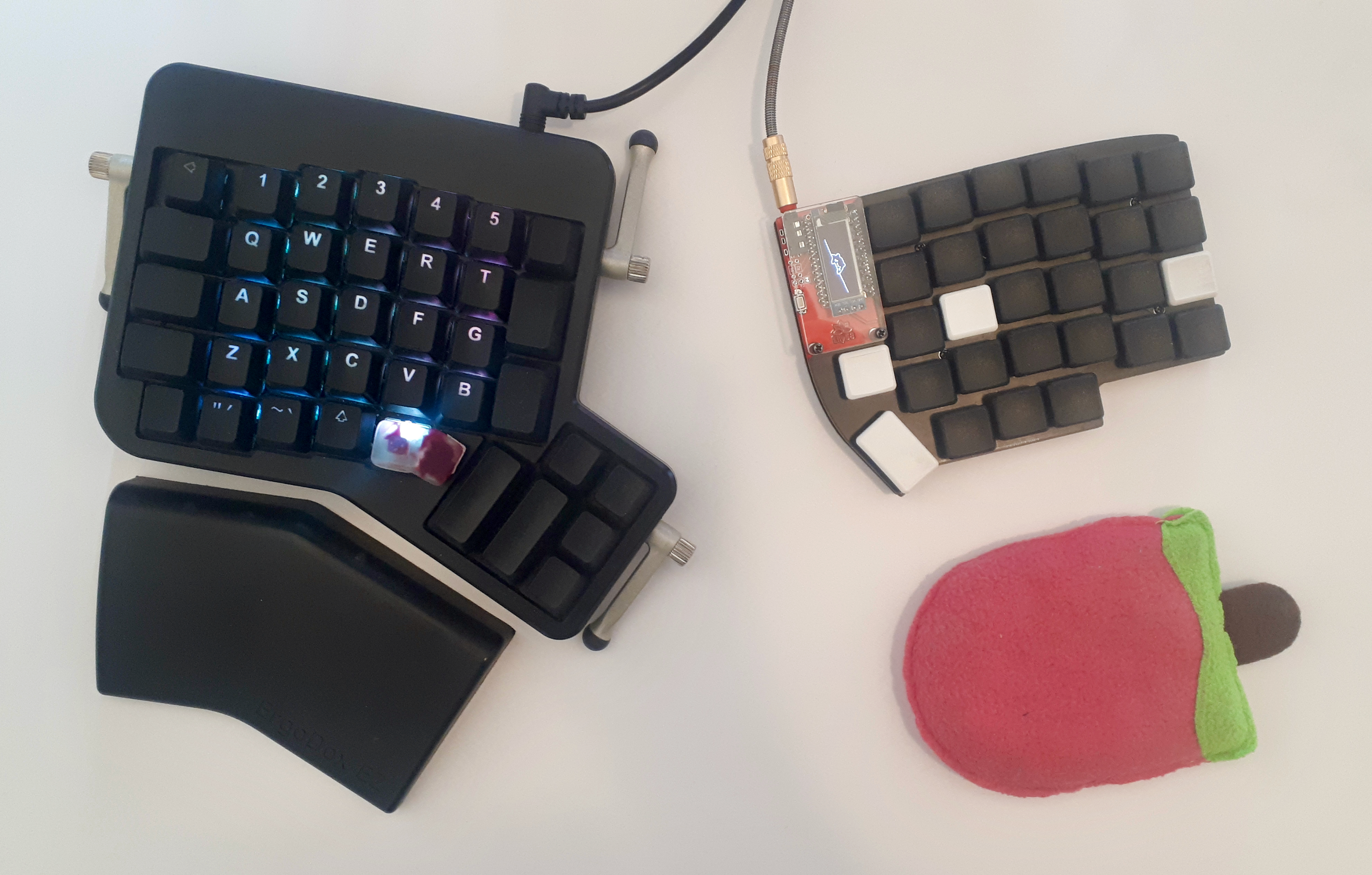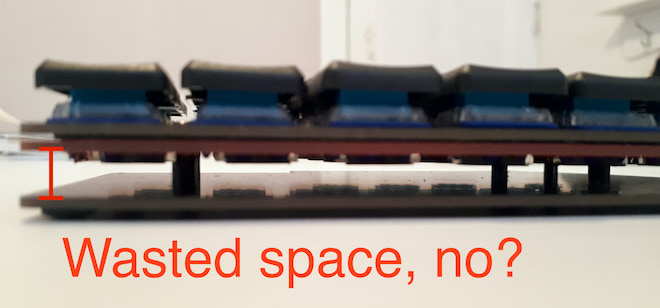Lily58 Pro (and boardsource.xyz) Review

My slow descent into madness quest for the perfect keyboard continues!
Previously reviewed:
TLDR; of the above reviews:
The Ergodox EZ is great, but the thumb cluster is frustrating.
The Dygma Raise is fabulous, but after a year on the Ergodox EZ I didn’t want to go back to a staggered keyboard.
The Zergotech Freedom is magnificent, but its configurator software is not as powerful as QMK and it’s not portable enough for a digital nomad.
Why get the Lily58 Pro?
I’ve been using the Ergodox EZ as my daily driver for most of the past 2 years and we’ve been very happy together.
My 2 main motivations for getting yet another keeb were:
- Getting a more comfortable thumb cluster (You can read about my half-success at 3D-printing keycaps that would fill that gap on the Ergodox.)
- Having a smaller keyboard (for travelling (damn pandemic’s gonna end someday…))
But a bunch of things are new for me with this keyboard:
- Lily58’s form factor, of course.
- Merely 58 keys! (The Ergodox EZ has 74 keys and a typical 60% board has 61.)
- Low profile switches (Choc Light Blue and Choc Pro Red)
- Configuring my board by compiling QMK myself
- OLED screens
- Buying from boardsource.xyz
So this review is basically a review of all those separate things.
The size and form factor
For reference, here are a few pictures of the Lily 58 Pro next to the Ergodox EZ.



The thumb keys
I’m happy to report that I’m much happier with the few thumb keys of the Lily58 than I was with the many thumb keys of the Ergodox. There’s no gap and all thumb keys are easy to reach. FINALLY 🎉
The staggering (column-staggered)
The one thing better than ortholinear is columnar staggered. But the Lily58’s staggering is so subtle you can barely tell it’s there! I wish the staggering was more aggressive. Especially for the pinky columns, like the Kyria does. Not a deal-breaker though, at least there is some staggering.
On having only 58 keys
I was a wee bit worried about losing 16 keys, but 58 turned out to be a very nice amount.
58 is enough to have a dedicated numrow and dedicated keys for:
- Caps Lock
- Switching to the arrow layer
- Switching to the numpad layer
- Starting a pomodoro timer (Macro key)
- Enter and Shift keys on both halves
I even have two Tab keys because I didn’t know what to do with one of them! For someone who’s had experience with QMK, switching to 58 keys is a breeze.
Is it worth having a small keyboard, though?
Yes. I thought small would be nice for easier travelling and didn’t think anything else positive would come from it, but now I appreciate having lots of space on my desk.
Also, small is cute. No?
The Lily58 Pro’s height
Boardsource’s Lily58 is not high by mechanical keyboard standards, especially with low profile switches, but I still wish it was shorter. The standoffs are 10mm high. I think that is pretty standard, but it seems to me like it could easily be 5mm shorter

The takeaway here is that you will need wrist rests. (I stole toys from the cat.)
Choc low profile switches review

I’m quite happy with them. The travel distance is impressively not much shorter than what you get with normal mechanical switches. There is a difference, but it’s so tiny it does not bother me at all.
HOWEVER. I first got Choc Light Blue switches. At a mere 20 grams of actuation force, they’re quite different than anything else I ever laid my hands on. After years of Cherry MX-browns, it felt very weird at first. Just weird.
Then I got used to it. After about a month, I re-typed on my Ergodox EZ and actually felt almost as weird about my old MX-browns… so heavy! It’s a nice, meaty feeling to type on heavier switches, but I’m kind of sold on lighter switches now.
Just not that light.
Choc Light Blues are so light I made more typos with them. They’re too easily triggered. Also, the tactile feedback is so subtle, typing on them felt kind of cheap.
So I ordered Choc Pro Red switches. 35 grams of actuation force. That’s the sweet spot for me. They’re super light and won’t fatigue my fingers, but still offer enough resistance to feel like quality mechanical switches.
I did keep Choc Light Blues for the last columns of the keyboard which I only access with my stretched pinky fingers. (Except the caps lock and layer switching keys, which are heavier to prevent unwanted keystrokes.)
Keycap choices for Choc switches
The worst thing about choc switches is the absence of choice when it comes to keycaps. Besides blank black or white keycaps, very, very few options are sometimes available. I’ve yet to come accros low profile artisans. Great hobby-business opportunity! Anyone?
Update on artisans: someone pointed out asymplex.xyz to me.
Is it harder to type on blank keycaps?
Meh. I must’ve lost 5 seconds over the past 3 months. But my layout barely changed from the layout I used on the Ergodox. If you plan on learning a new layout like Dvorak, Colemak, BÉPO or whatever, blanks may make your life harder for the learning phase.
Compiling the QMK firmware from source
At first, I configured the Lily58 with QMK Configurator. It’s the open-source equivalent of ZSA’s Oryx, which remains the best GUI for QMK in my opinion, though it only works for ZSA’s board.
The QMK Configurator worked all right. I appreciated the baking potatoe. But I quickly bumped into limitations and switched to compiling from source.
There’s no way you’ll ever get to do as much with any GUI tool than you will by compiling yourself. Quick example: Oryx now makes it possible to create macros, but they limit you to 4 characters per macro to make sure you don’t make a layer called “My Passwords + my email address and the name of all my family members”.
YOU’RE NOT MY MOM, ZSA!
Seriously though, I should be able to do whatever I want with my personal keyboard. That’s what compiling QMK yourself gives you access to; more possibilities than anything else.
How hard is it to compile a firmware with QMK?
I’m a programmer, so compiling QMK from source was not a big challenge. However, I think most people without programming experience will find it hard to install git, use the command line and edit code. It’s simple code, but it’s code nonetheless.
That being said, you don’t need to understand C or any particular programming concept to edit your keymap. A bit of Googling around answered all my questions rather fast. I’ve had a bit of trouble figuring out more complex things like “a tap dance that does a one shot layer switch when tapped but acts as a mod when held”, but I got there.
Even with programing experience, you will need a couple hours to get comfortable with the whole process. Worth it, though!
Boardsource.xyz review
Boardsource is one of the rare shops selling assembled Lilys at a decent price with lots of options (Switches, colors, cable…). I made two orders: the full kit and 40 switches later.
The first order - full kit
The keyboard got to me nicely packaged with a little “enjoy” message on the invoice and it was easy to assemble. It could’ve been easier to assemble with, like, a single webpage about the process, but no biggie.
There was one big problem after assembling it though. One key didn’t register keypresses :|
I don’t know if Boardsource or USPS is to blame for it, but one of the keys’ soldering didn’t make it through shipping and contact wasn’t happening. I asked for help in Boardsource’s Discord and got good advice which allowed me to fix it. The fix was to push hard with my thumb so that the current could go through… Soldering with my bare hands, if you will. That repair survived a good shake in the air and then a couple of months, but eventually, I had to re-solder the switch properly (took 1 minute once I found a solder gun).
Besides this one misfortune, everything was dandy and I never had nicer looking cables ✨
Second order - a pack of switches
I ordered 40 switches and got 38. Oh well, shit happens.
Sent an email about my sorrow to the good people at Boardsource.xyz and they immediately agreed to refund the 2 missing switches.
That sums up my experience with Boardsource.xyz. Would do business again, but I cannot say it’s been flawless.
OLED screens
There’s a legit question about OLED screens on a keyboard: why?
It might seem to you that having OLED screens on your keyboard is a bit like having neons under your car; a flashy gimmick. And you wouldn’t be completely wrong. But OLED screens are actually convenient to see which layer you’re on. Not as efficient as per-key RGB, I must say, but the next best thing.
Should your keyboard have issues, it can be useful for debugging, too. I personally used it when debugging my faulty key. But really, I could’ve done it without the OLED.
So, it’s more useful than neons under a car, but definitely not necessary. One of my OLED screen keeps me informed of the current layer. The other one displays a Bongo Cat typing along with me. 🐈
Conclusion
The Lily58 pro is now my daily driver, replacing the Ergodox EZ after 2 years. The big differentiator is the more comfortable thumb keys, but I also really like the smaller form factor.
At 58 keys, this board is also not too weird for a first ergonomic board. (Unlike the Corne, which might be a bit hardcore.)
Also, if you are thinking about compiling QMK yourself, my advice is DO IT.
Should you be curious about my keymap, here it is:
https://github.com/FelDev/qmk_firmware/tree/dev/keyboards/lily58/keymaps/feldev